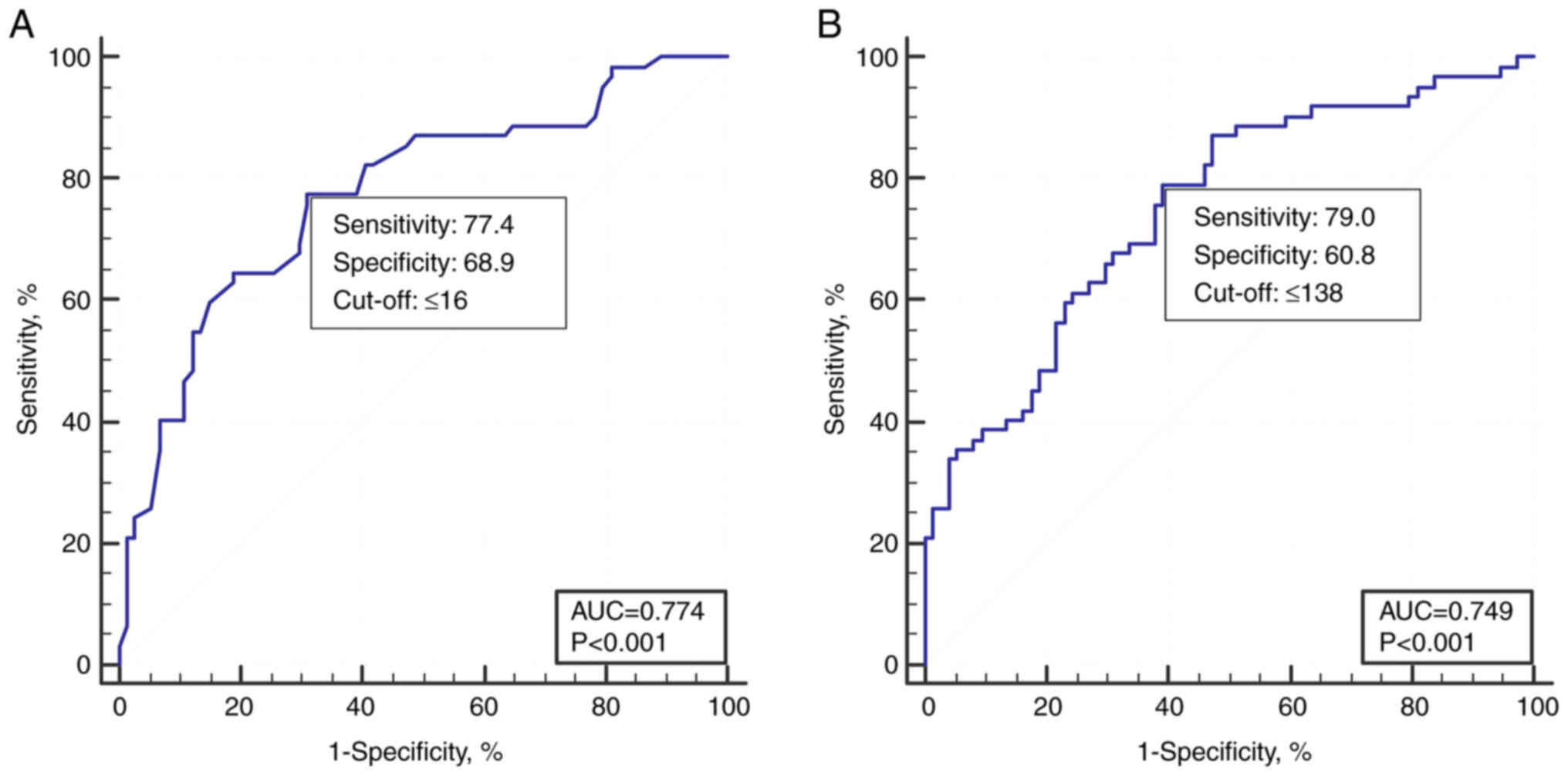Underdiagnosis of cervical intraepithelial neoplasia by colposcopy and its association with thin high‑grade squamous intraepithelial lesions
- Authors:
- Published online on: May 19, 2023 https://doi.org/10.3892/ol.2023.13873
- Article Number: 287
-
Copyright: © Li et al. This is an open access article distributed under the terms of Creative Commons Attribution License.
Metrics: Total
Views: 0 (Spandidos Publications: | PMC Statistics: )
Total PDF Downloads: 0 (Spandidos Publications: | PMC Statistics: )
Abstract
The relationship between the thickness of the epithelium and the colposcopic diagnosis is controversial. The present study was conducted to determine whether colposcopic underdiagnosis of cervical intraepithelial neoplasia (CIN) is associated with thin high‑grade squamous intraepithelial lesions (HSILs) of the cervix. A total of 136 cases of HSIL verified by pathological biopsy at Peking University People's Hospital between June and October 2021 were retrospectively analyzed; 79 cases were CIN2 and 57 cases were CIN3. The number and thickness of epithelial layers were analyzed using colposcopic impressions. In the low‑grade colposcopic impression group, the number of epithelial layers (12.8±4.2 vs. 17.8±4.2) and epithelial thickness (105.2±41.9 µm vs. 150.3±50.0 µm) of CIN2 lesions were significantly lower compared with the high‑grade colposcopic impression group; however, the differences for CIN3 were not statistically significant. CIN2 lesions had significantly fewer (12.8±4.2 vs. 17.2±5.4) and thinner (105.2±41.9 µm vs. 140.4±48.6 µm) epithelial layers than CIN3 lesions in the low‑grade colposcopic impression groups. In the high‑grade colposcopic impression group, however, there were no significant differences in the number or thickness of epithelial layers between CIN2 and CIN3. In 12 cases of thin HSILs, 91.6% of the colposcopic impressions were low‑grade. Thin HSILs are likely associated with underdiagnosed colposcopic findings, particularly for CIN2. Thin HSILs usually present with small to minute lesions and lack the typical colposcopic appearance of classic HSIL, which may help to explain why thin HSILs are easily underestimated under colposcopy.












